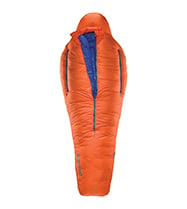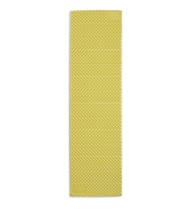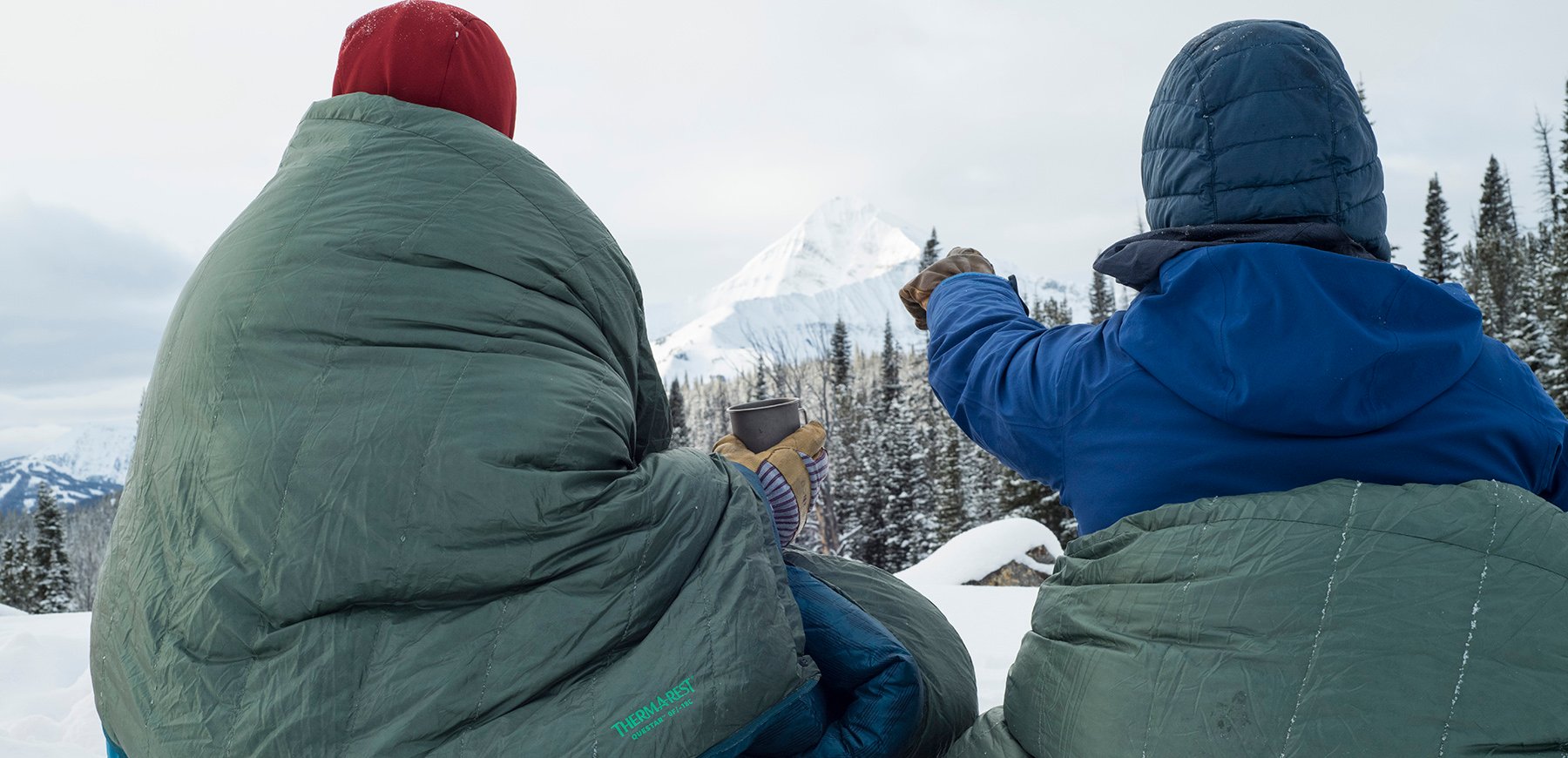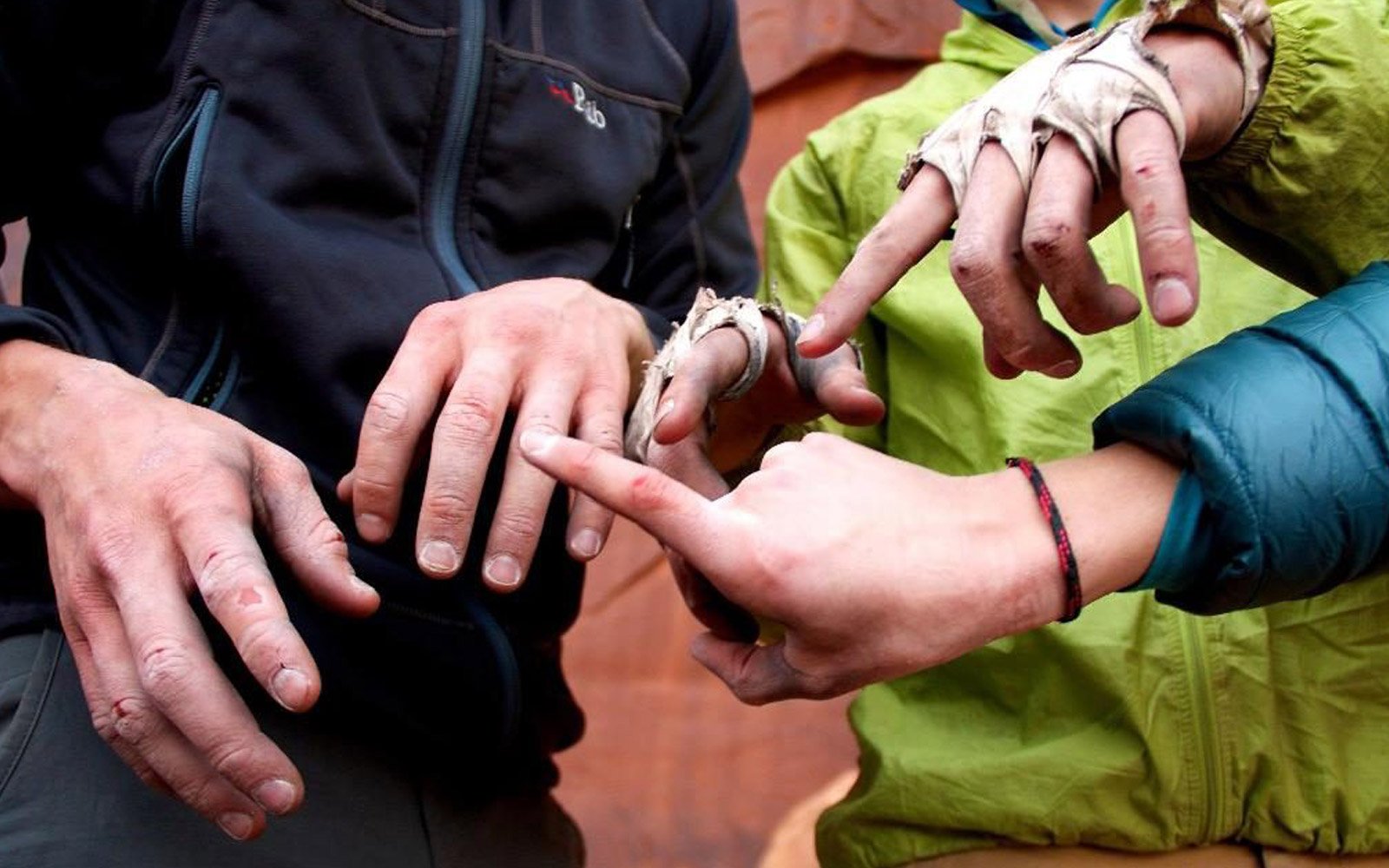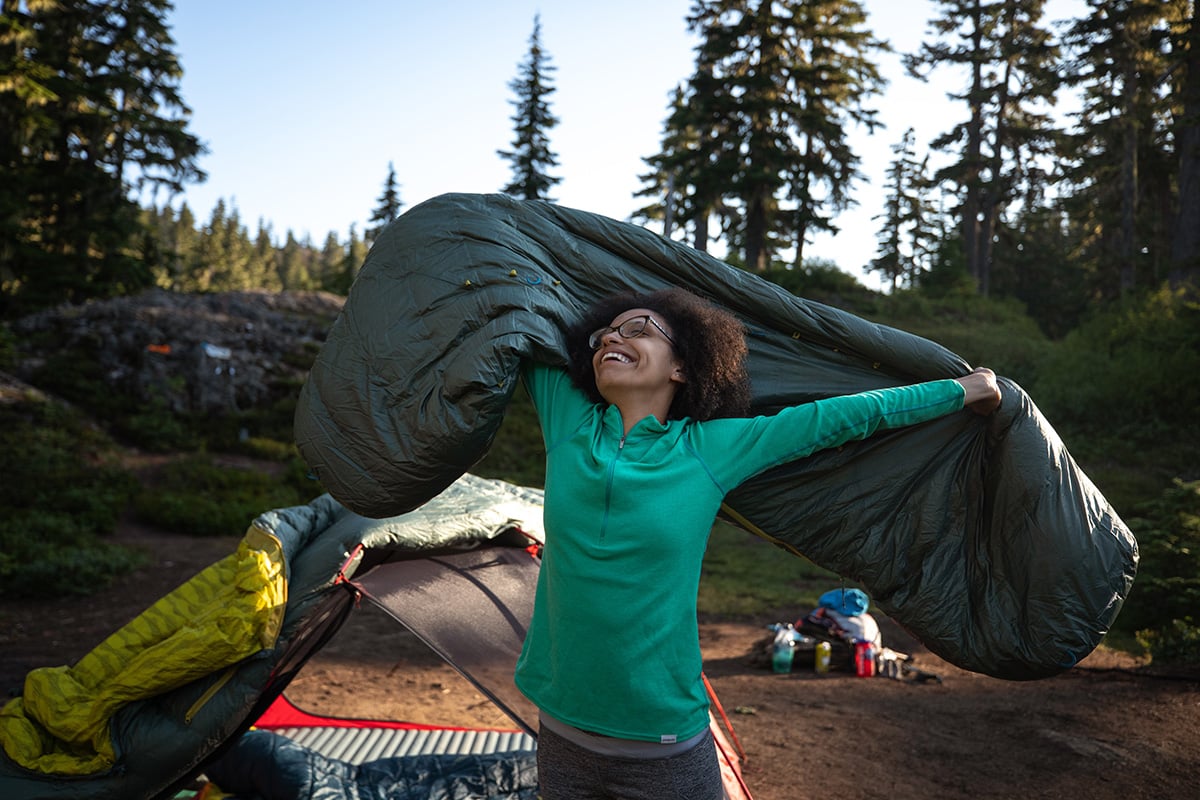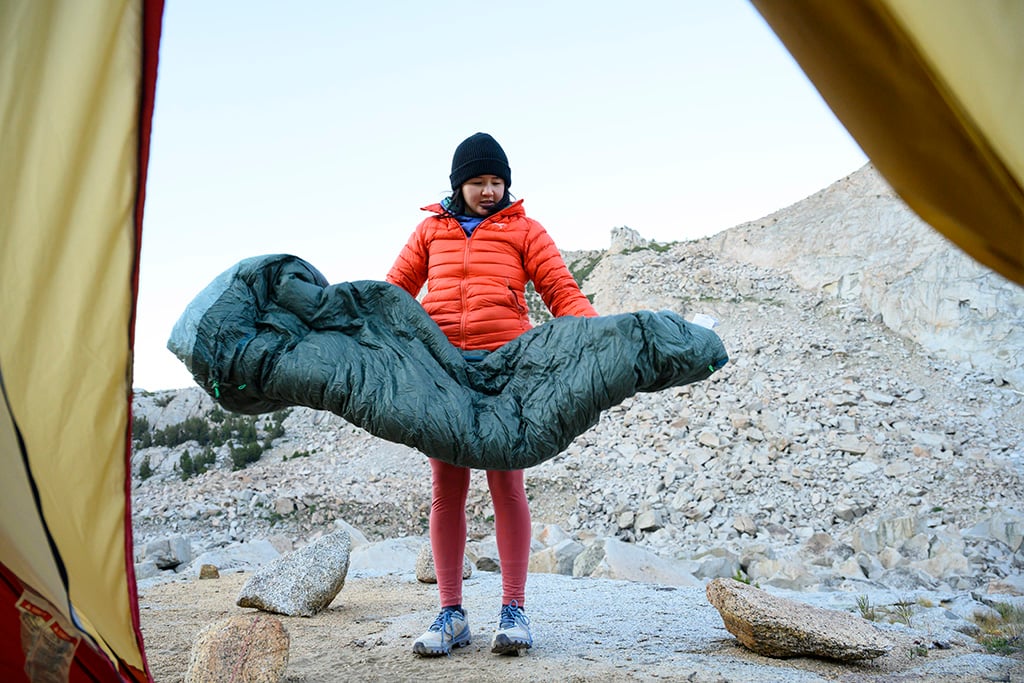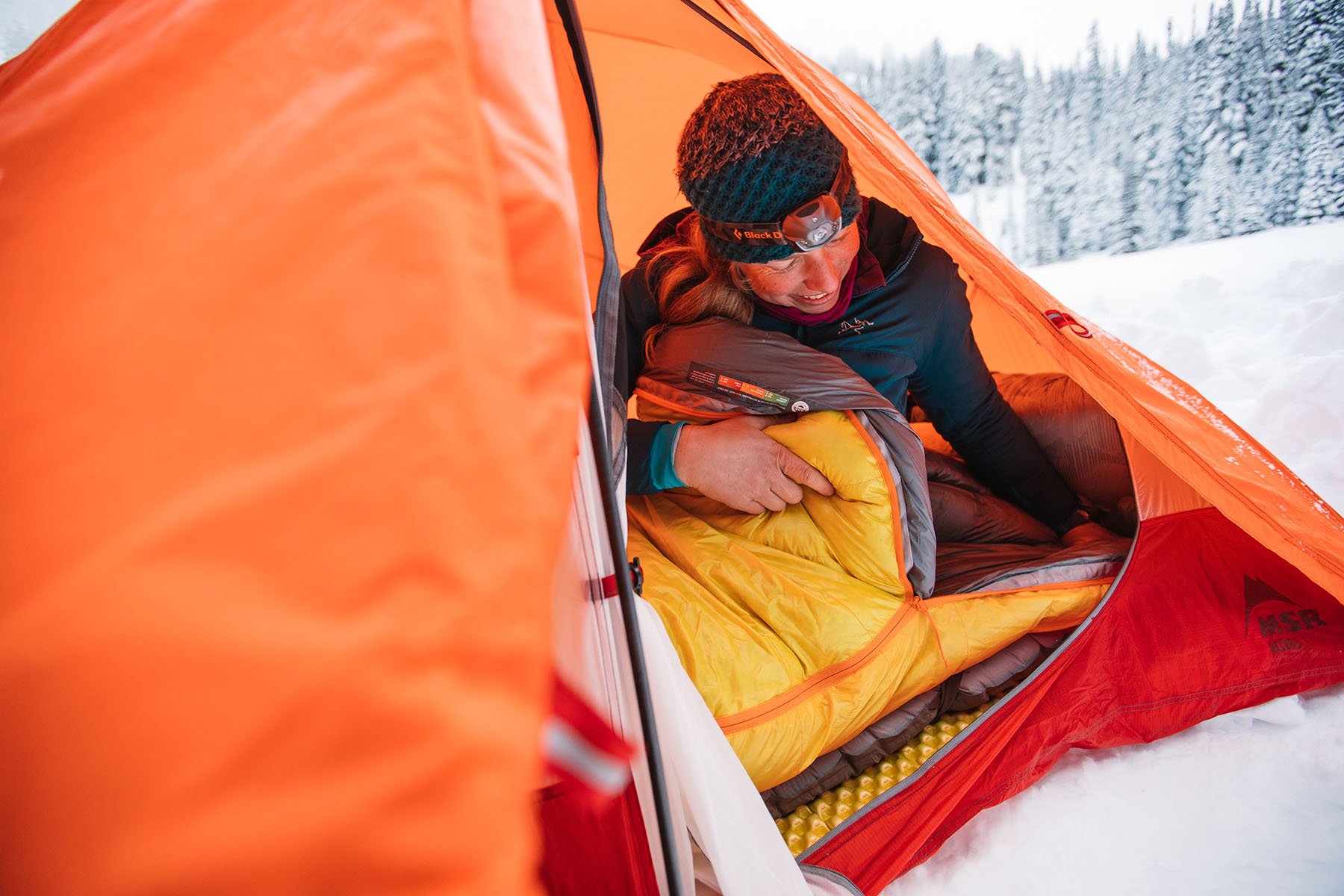I’ve been through it all when it comes to cold weather sleeping bags. My expeditions and projects have found me in a myriad of situations, including shivering in a 40-degree summer bag through a 17-degree night, lugging a thick Coleman® flannel bag miles into the woods, sweltering in a 0-degree bag on a humid summer night, spending days in the backcountry with a completely soaked down bag, and fighting frostbite through a -60-degree night.
I used to roll my eyes at people who bought the fanciest and most expensive equipment, deeming it unnecessary and a bit ridiculous. However, time and experience have changed my perspective a bit. Allow me to explain.
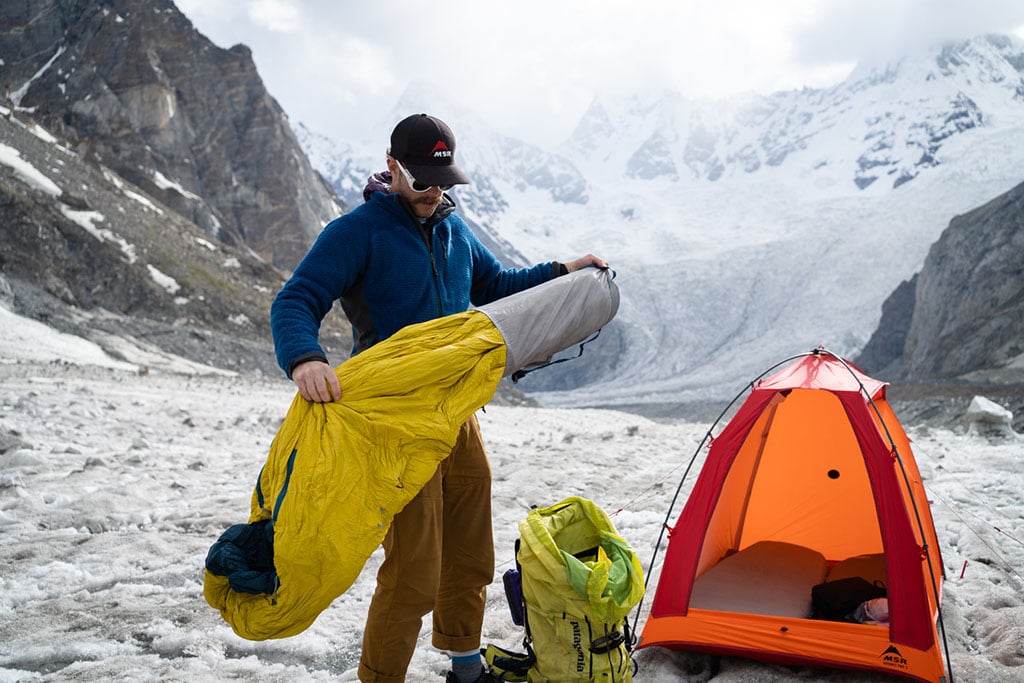
There are so many different applications for bags and sleeping equipment, and choosing the right bag can be, and often is, completely overwhelming. For example, even though two different locations might share the same temperature, there are so many more factors to consider than just the temperature alone. The temp is, of course important, but among other key factors is the amount of space I may or may not have, the type of activity, the length of the trip, and the variability of the weather down to the humidity… all are taken into consideration when I am packing for a trip, climb, or expedition.
Sometimes, you might find the perfect gear for your objective. However, in my experience, compromises often need to be made. The crux is finding a bag that checks the boxes of what is most critical for your specific endeavor.
When deciding on a cold weather sleeping bag, my decisions are influenced by weight, warmth/performance, and design/durability.
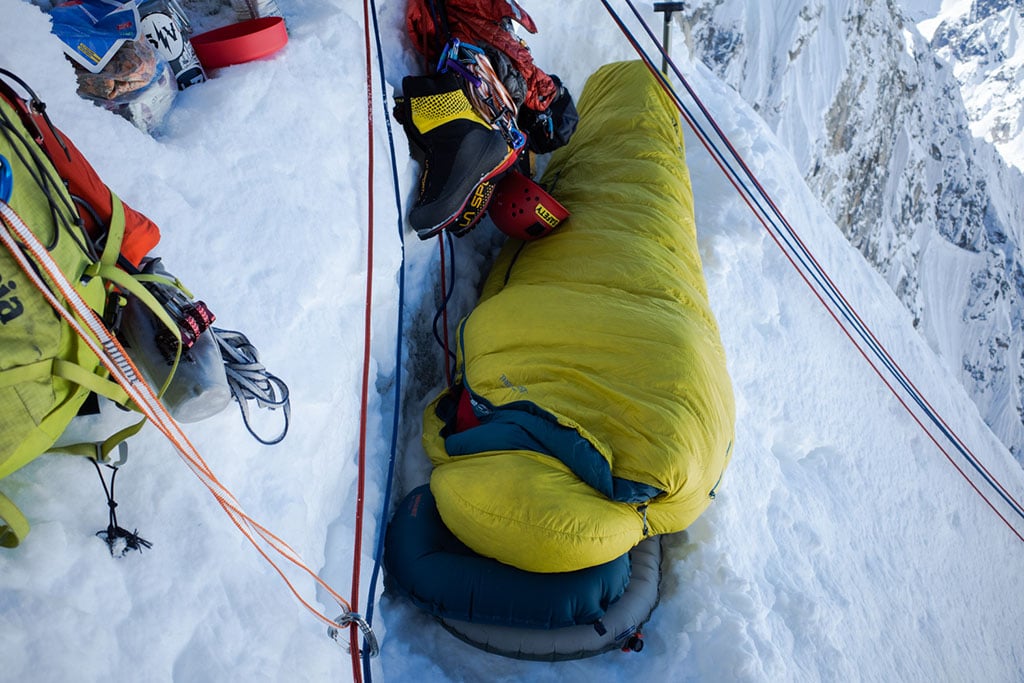
Sleeping Bag Weight
I am often willing to trade a little bit of warmth and comfort for a lighter pack. Many alpinists even go so far as to share a sleeping bag with their climbing partner to save weight. Talk about trading some comfort! (Of course, that depends on who your partner is). Also, I’ve seen professional athletes have their sponsors make them custom-built bags unique to their style and needs.
Less weight is always nice, but it often comes at a price. Lighter cold-weather sleeping bags inevitably won’t have the same durability and construction that a burlier sleeping bag has, and they will be more expensive. By contrast, a “burlier” bag won’t have the packability of a lighter bag, which could drastically affect what you can fit into your pack.
Essentially, the lighter you go, the higher the stakes become. Adopting a fast and light mentality can be crucial and imperative for what you are doing. Alternatively, it can be a bit unnecessary. While you may win in the weight category, you may lose in others. On a Mount Robson climb a few years back, we took 20-degree bags to save weight, whereas a 0-degree bag would have been the ideal temperature rating. We got caught in a storm and spent a very, very cold night praying our tent walls wouldn’t tear, but the lighter bags and more space in the pack were critical for the objective.
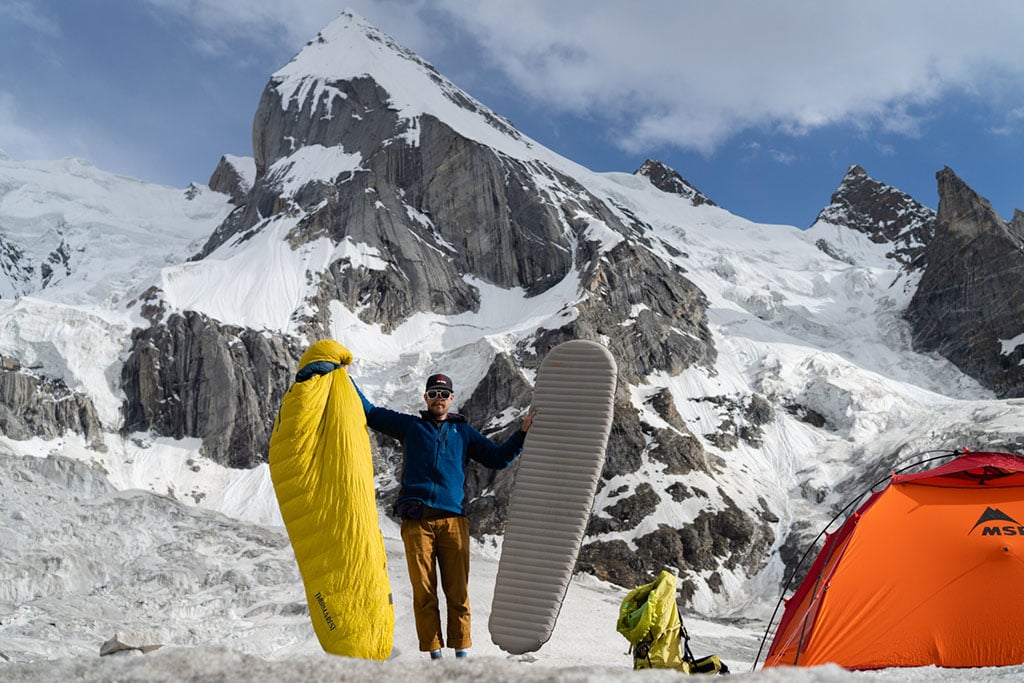
Allow me to stray from sleeping bags for a moment to give an example, as most gear follows this same trade-off dynamic. My climbing partner and lifelong friend, Allen, has had an XTherm™ sleeping pad since 2017. It has survived a 40,000-mile, year-and-a-half-long, moto trip through the Americas, a pile of 6000m expeditions, countless backcountry escapades, and two months in Pakistan this summer, to name a few. While Therm-a-Rest does make lighter pads, Allen knows he can count on the XTherm’s durable construction.
There are times when we’ve opted to take a lighter pad on missions where going fast and light was absolutely critical, but the point is the NeoAir® Uberlight™ pad couldn’t have taken the beating over the years that the X-Therm has because it has a very specific purpose and application. Don’t get me wrong, the Uber is one of the most badass pads out there if weight is your most important criterion. When it comes to a fast and light alpine or backcountry mission where I expect to cover a lot of ground or terrain, I’ll opt for lighter sleeping bags over warmer bags any day of the week. It also doesn’t hurt that as time goes on, companies are making better and better bags that push the envelope of what is possible.
The bottom line? Less weight is good, but it isn’t always the best.
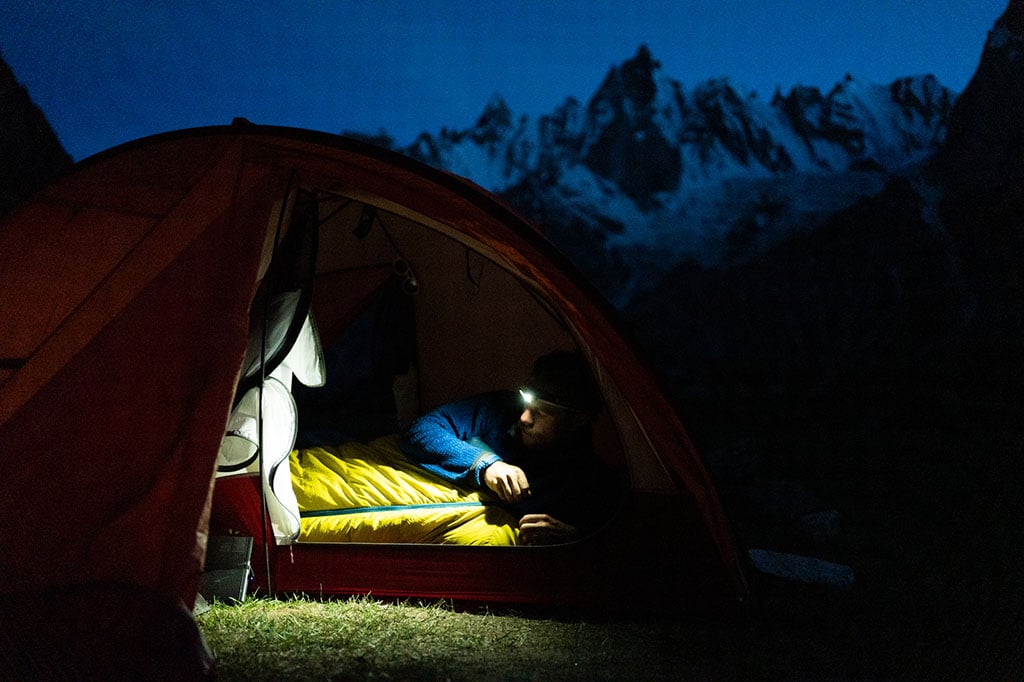
Sleeping Bag Warmth
Coming from a background of Goodwill and thrift store sleeping bags, I have logged more than a few nights in both good and bad bags and have experienced the contrast between the two. Gear matters, and the more I push myself the more I’m convinced of it.
One of the qualities that I look for in a bag is its insulating ability in less than ideal situations, such as damp environments. This can make a massive difference on multi-day missions in compact tents or bivouacs, when moisture becomes a constant battle and there is no time or opportunity to dry things out.
I know that some alpinists advise not to take down bags on any climbs that are longer than two days, opting for synthetic bags instead. Synthetic insulation performs better than down when wet. This is rapidly changing with the advancement of the technology behind the latest bags—hydrophobic down is a force to be reckoned with. Does it actually make a difference? Well, I’ve learned the hard way so I’ll save you the trouble. Yes, it does. The science doesn’t lie, and the Nikwax Hydrophobic Down™ found in Therm-a-Rest’s bags dry three times faster, absorb 90% less water and maintain loft 60 times longer than untreated down.
I also think that placing down insulation in key areas helps a great deal. I’ve experienced Therm-a-Rest’s Toe-asis™ foot warmer to make a noticeable difference. As you may or may not know, often the only way to dry something out (i.e. gloves, liners, socks, base layers, etc.) in cold climates is to stuff them in your sleeping bag for the night, allowing your body heat to dry the moisture. The Toe-asis feature helps concentrate heat in an area that is extremely helpful for guaranteeing that your damp gloves are dry by morning.
Sometimes the decision-making process is straightforward and the temperature rating of your sleeping bag is by far the most important factor. When dealing with extreme temps, you obviously can’t get away with a 15-degree bag on a -20 night, so safety should always be the biggest concern, and be sure to choose a bag that is appropriate for your climate.

Sleeping Bag Design
In the mountains, there are so many factors and variables that inevitably cannot be controlled. To me, a huge part of pushing the envelope of my personal capabilities comes down to minimizing the variables that I can control. Sleeping gear is a massive component of that very thing, and a variable to be taken seriously.
Durability is an important and obvious quality. Nobody wants to buy a new sleeping bag every few years because of a busted zipper, ripped baffles, or down that has lost its loft. I would say most of us save up for a while and choose our sleeping bag carefully, because hell, good gear isn’t cheap. I want to be able to trust that my gear will hold up when I’m miles in or weeks deep into a trip.

Design in my mind goes hand in hand with durability. Durability is a product of good design. I think there’s a lot of gear out there that is designed to turn a profit, and then there’s gear that’s designed to last. Buy once, cry once, I always say.
A sleeping bag may be warm, and it may be light, but can it handle moisture, is the material water resistant? Can it be smashed up against the damp walls of a tent for a week, or survive several rainy nights inside a bivi bag? If the construction isn’t there, your “warm” cold weather sleeping bag will soon be wetted out and anything but warm.
In conclusion, there isn’t a one size fits all approach to sleeping bags, but I hope the few things that I’ve learned along the way can be helpful and insightful for those that are looking to invest in their own sleeping bag.
Related Posts:
- 3-Season Sleeping Bags vs. Winter Sleeping Bags
- Sleeping Bag Temperature Ratings – Understanding EN/ISO Ratings
- How to Choose the Right Sleeping Bag Size, Shape & Fit
Updated. Originally Published January 11, 2022.

